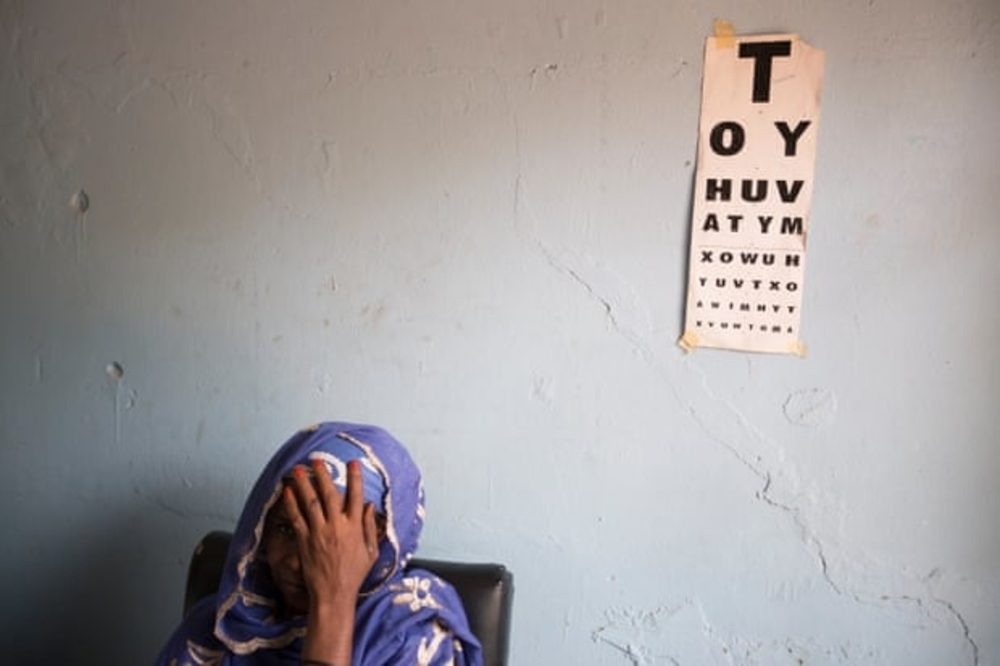Aging and population growth, challenges for vision care
Population growth and aging are fast outpacing reductions made in the prevalence of visual impairment over the past three decades, according to the World Health Organization’s first-ever report on vision.
At least 2.2 billion people are currently estimated to be suffering from a form of vision impairment or blindness globally. The number of people with myopia, an eye condition that makes it difficult for a person to see distant objects, is expected to increase from the estimated 1.95 billion people in 2010 to 3.36 billion people by 2030, according to the report. People in need of yearly or biennial retinal examination for diabetic retinopathy will increase by 50% in 2040.
The anticipated rise in the numbers of people suffering from different forms of visual impairments and at-risk of blindness is expected to pose challenges to countries’ health systems, which are already constrained in reaching all affected populations and providing quality interventions.
“Although increases in cataract surgical rates have been documented in many countries, recent evidence suggests that post-operative vision results are, at times, suboptimal,” the report states.
“If eye care services are integrated in countries’ national health systems, we stand a better chance of making sure that people can access the health services that they need across the course of their lives.” Graciano Masauso, President of Africa Health Organisation (AHO)
People living in rural areas, women, the elderly, people with disabilities, ethnic minorities, and refugees — often burdened with higher rates of vision impairment and blindness — are also often unable to access eye care services. One issue is that eye care services are often restricted to urban and larger regional settings.
One-third of countries that completed WHO’s eye care service assessment tool in 2014-2016 also revealed equity gaps in the distribution of health care workers specializing in eye care across countries’ geographic areas. In some of these countries, optometry is not recognized as a profession.
A number of countries’ health insurance schemes don’t provide coverage for eye-related medicines and interventions such as cataract surgery. The cost of these interventions often comes out of patients’ own money.
Where patients are covered, the challenge is accommodating the increase in the number of surgical interventions while ensuring benefits are not taken advantage of by schemes.
But one of the biggest challenges is lack of data. Without it, it would be difficult for decision-makers and implementers to identify the problems and provide targeted solutions, as well as make the case for resource allocation.
“As the report itself states, more reliable data on the met and unmet eye care needs is required for planning eye care services, so we can identify who needs eye care services, who is not currently accessing them and where they are located,” said Graciano
In many of the countries where international NGOs work however, health management information systems are still being developed. Haslam said efforts to strengthen health systems should extend to these vital information systems, and include eye health data.
“Over the next few years, AHO is planning to publish a suite of tools to help countries develop comprehensive eye care services and we look forward to supporting this in the countries where we work,” he said.
The report underlined the importance of integration in addressing the burden of eye conditions. It recommends countries integrate eye care in their national health plans and care packages and services. It also underscored the importance of coordination between the public and private sectors.
“Every country has a health and strategic plan, but eye care is frequently not seen as an integral part of it. The eye care agenda has been frequently planned and delivered as in a parallel system and not as an integral part of health,” said Graciano
“Also, in many countries, a high percentage of eye care services are delivered by the private sector, and usually the public and private sectors are not well coordinated,” she added.
Haslam hopes the report will galvanize governments to action, and lead to greater awareness and the political will to deliver better eye health for all.
“If eye care services are integrated in countries’ national health systems, we stand a better chance of making sure that people can access the health services that they need across the course of their lives,” he said.


